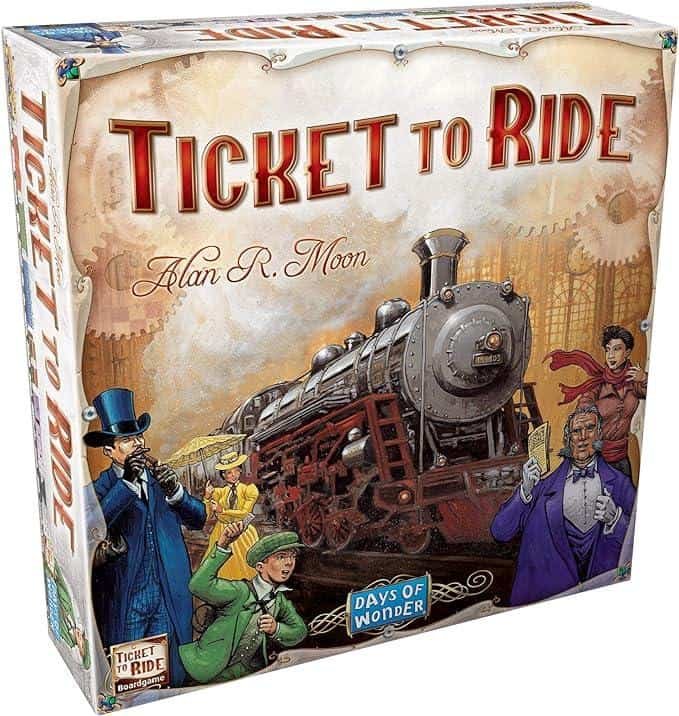
Along with the likes of Catan and Pandemic, Ticket To Ride has been a cornerstone of the board game hobby for many years now. The game has firmly left its mark on the scene and thanks to the simple yet solid gameplay mechanics, TTR is just as popular now as it was when it was first released back in 2004. Designed by Alan R. Moon and published by Days of Wonder, Ticket To Ride has sold over 18 million copies and has been translated into 33 different languages. As an award-winning game, having been nominated for and won dozens of awards over the years, as well as receiving more expansions and spin-offs than you can count, it’s safe to say Ticket To Ride is one of the most popular games in the world.
There’s a simple reason for this: Ticket To Ride blends simple-to-learn rules with a good degree of strategic gameplay. Sprinkle in a small amount of luck, and you have one of the games that helped coin the phrase ‘Gateway Game’. A game that both casual gamers and enthusiasts can enjoy, and one that’s a great introduction to games outside Monopoly. Ticket To Ride at its core is a game about expansion. Players will take turns trying to create trainlines that spread across the United States, and the player that can generate enough points at the end of the game by creating the most and the longest train lines wins. Play boils down to players either laying these train lines with the corresponding coloured train cards in their hands, or drawing new ones from a communal set of face-up cards. Very simple rules, but with players having specific routes they have to create listed on their destination cards, and each line only accommodating one player’s trains, it gets tricky as time goes on.
Whether you’ve played TTR and want something new, or like the idea of the game but not necessarily the theme, below are a handful of board games like ticket to ride and we think you’ll enjoy.
The Ticket To Ride Expansions
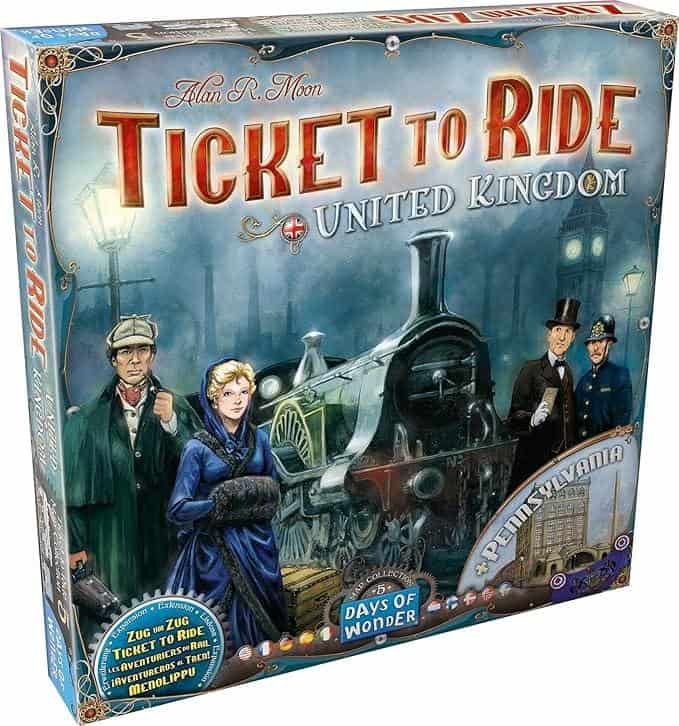
By: Days of Wonder Players: 2-5 Time: 30-60 Minutes Ages: 8+
Some might see this as a bit of a cheat but…there’s logic here I promise. Ticket To Ride’s map focuses on North America but many of the expansions, whilst adopting the same basic rules, all feature a new location and a twist on the traditional rules, making it feel like a brand new game.
There are plenty out there to choose from: England, Europe, Africa, India, Asia, France, to name a few. This provides a new set of routes to conquer and destination cards to challenge yourself with, all without having to learn a completely new set of rules. That said, based on the location or period the game is set in, there are normally one or two additional rules to spice things up and make the game feel just different enough from it’s counterparts that it feels like you’re playing something completely different. Some versions will also be quicker and easier to play through for those who are short on time. New York for example, provides a much smaller map than most and should be playable in less than half the time of a traditional game. This makes it a great option for those who prefer a shorter game, while the original offers a longer game experience.
If you’re a fan of the original game and you haven’t tried any of the other versions, we’d certainly recommend you doing so as you won’t be disappointed!
- Easy to learn with straightforward rules.
- Fast gameplay with high replay value.
- Combines strategy with fun map-building.
- Light on player interaction.
- Can feel repetitive without expansions.
- May be too simple for heavy strategy gamers.
Award-Winning Alternatives
If you’re looking for more award-winning games like Ticket to Ride, consider the following alternatives:
Carcassonne: This tile-laying game invites players to build a medieval landscape, placing tiles to create cities, roads, and fields. Carcassonne has garnered numerous awards, including the prestigious 2001 Spiel des Jahres. Its simple yet strategic gameplay makes it a favorite among board game enthusiasts.
Pandemic: In this cooperative game, players work together to stop the spread of diseases and save the world. Each player takes on a unique role with special abilities, making teamwork essential. Pandemic has won several awards, including the 2009 International Gamers Award, and is celebrated for its intense, collaborative gameplay.
Settlers of Catan: Known for its resource-trading mechanics, Settlers of Catan challenges players to build settlements, roads, and cities on an island. This classic game has won numerous awards, including the 1995 Spiel des Jahres, and remains a staple in the board game community for its strategic depth and replay value.
These games offer similar mechanics and gameplay to Ticket to Ride, but with unique twists and challenges that keep the experience fresh and exciting.
Explore Other Games with Similar Mechanics
If you enjoy the route-building mechanics of Ticket to Ride, consider the following games:
Elfenland: In Elfenland, players embark on a journey across a fantastical map, using a unique mechanic of rotating tiles to create new paths. This game combines strategic planning with a touch of whimsy, making it a delightful alternative for fans of route-building games.
Russian Railroads: This game takes route-building to a new level as players construct railroad routes across a map of Russia. With a focus on building and upgrading trains, Russian Railroads offers a complex and rewarding experience for those who love strategic depth.
Bruxelles 1893: Set in the art nouveau period, Bruxelles 1893 challenges players to build routes across a map of Brussels. The game features a unique mechanic of constructing and upgrading buildings, adding an extra layer of strategy to the route-building experience.
These games offer similar route-building mechanics to Ticket to Ride, but with unique twists and challenges that will keep you engaged for many play sessions.
Catan
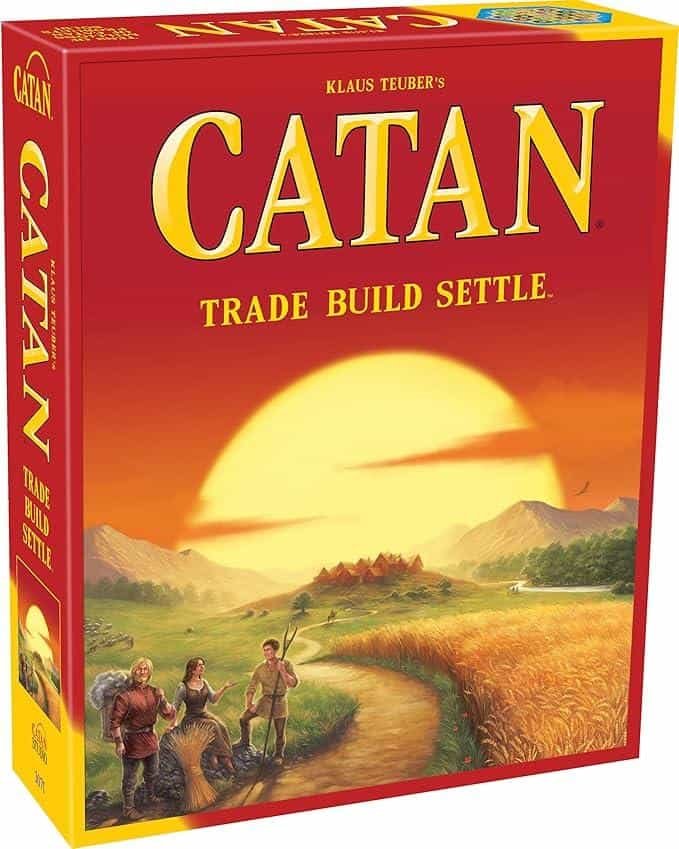
By: Kosmos Players: 3-4 Time: 60-120 minutes Ages: 10+
Another staple of board games, Catan is a strategic and semi-co-operative game where players try to expand and develop their settlements in order to gain as many victory points as possible.
Set on the island of Catan, players must use strategy, cunning, and negotiation skills to be successful. Starting with just a couple of settlements and roads, everyone must try to expand their presence on the island as much as possible. This is done through utilising resources to buy new structures, but resources are not always easy to come by. The map is made up of a series of hexagonal tiles arranged in a particular way, each representing a different landscape, resource, and listing a number on them. Every turn dice are rolled and any player adjacent to the tiles whose numbers came up collects that resource. If they still don’t have what they need, players can trade different resources with each other, but this is always a risky tactic as the trade may secretly benefit the other player more than you. As a player becomes more dominant on the board, once someone has collected ten victory points they are declared the winner.
A great strategic gateway game, Catan is simple to learn and provides hours of enjoyment and entertainment.
- Engaging Gameplay: Dynamic resource trading and settlement-building.
- High Replayability: Modular board setup keeps each game fresh.
- Strategic Depth: Balancing negotiation and resource management.
- Luck Factor: Dice rolls can lead to uneven resource distribution.
- Player Downtime: Waiting for turns can be lengthy with more players.
- Component Management: Many small pieces can be cumbersome.
Small World
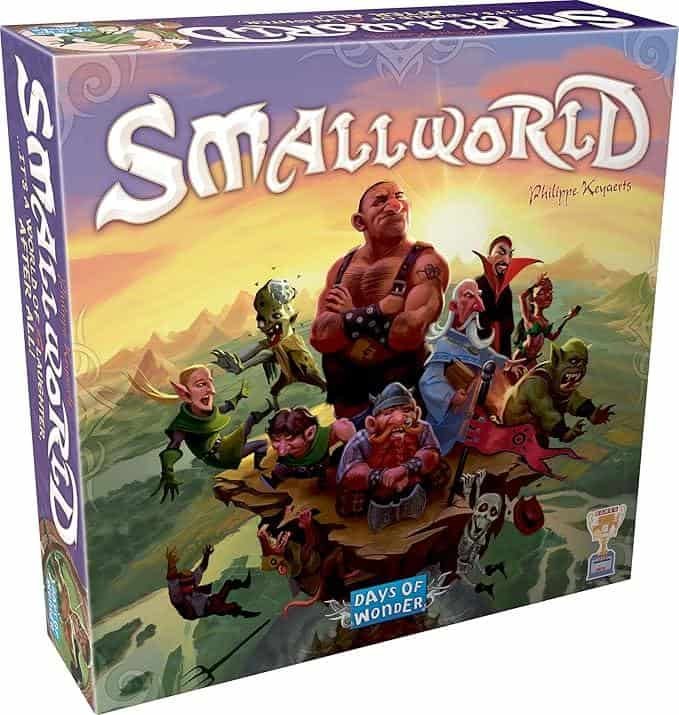
By: Days of Wonder Players: 2-5 Time: 40-80 minutes Ages: 8+
In a similar manner to Catan, Small World focuses on expanding one’s reach and controlling as much of the game board as possible. Rather than utilising resources and trading, the game does this through tile placement alone.
Set in a fantasy world hosting over a dozen different races, the objective of the game is to own as many different sections of the game map as possible. This is done by taking control of the different races of the world and spreading their army as widely as possible. Along with tiles representing the races, there are tiles depicting different abilities. The two types of tiles get shuffled together to create unique and interesting combinations. Players choose which ones they want and how often to switch them up (as new combos replace old ones when taken) and will try and spread them across the board. Spread too thin though, and the army may get overwhelmed by an opposing one. Each turn players will receive points for how many sections they managed to acquire and at the end of the game, whoever has accumulated the most points wins.
A great strategy game that offers a good level of depth, different sized game boards depending on the number of players, and endless replay value thanks to the race and ability combinations available, making it one of the favorite games among board game enthusiasts.
Carcassonne
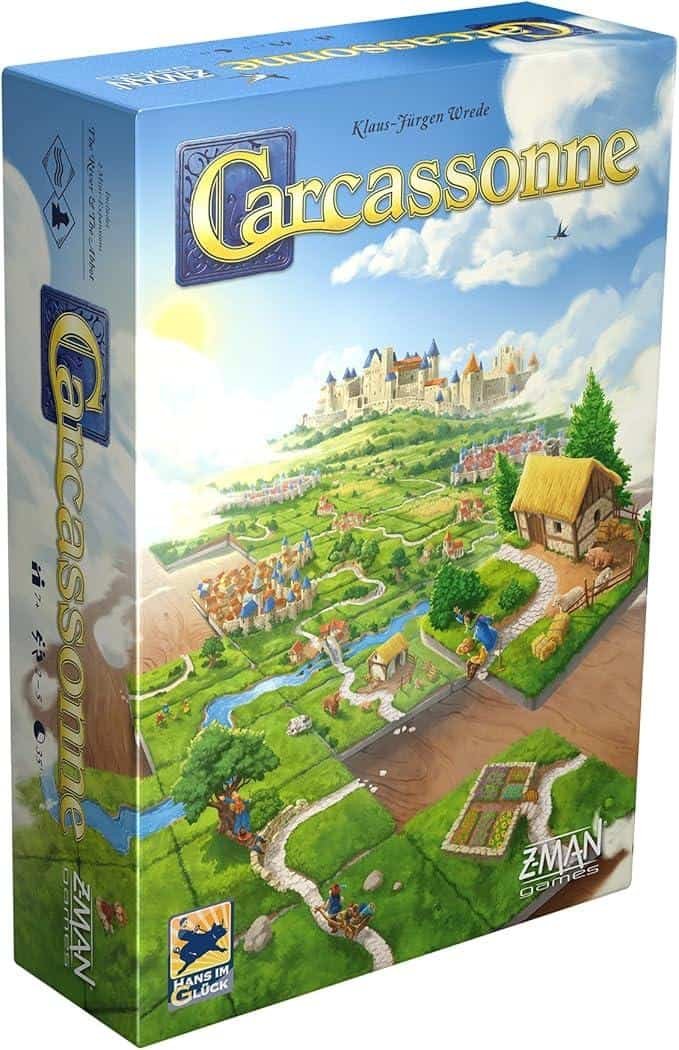
By: Z Man Games Players: 2-5 Time: 30-45 minutes Ages: 7+
A cerebral tile placement game, players must use randomly generated tiles to try to create roads, farms, and towns that connect perfectly. Utilising the space and placing the tiles in the best position will grant players more points, granting them a greater chance at victory.
Named after the French city, Carcassonne is a tile placement game in which players draw and place a tile depicting a piece of southern French landscape. The tiles are face down in a stack with a new one being picked each turn, and they’ll all represent cities, roads, grasslands and more, or a combination of more than one thing in particular. Once a player has a tile, they must place it adjacent to tiles that have already been player, ensuring that roads, cities, and landscapes all match. The objective is to try and create the largest spaces possible as the more matching tiles, the more points a player will receive. Everyone is given a set of Meeples, little wooden figures, which players can place on the tiles where they see fit. Once a section is closed off and completed, anyone with a Meeple in that area will score points based on the size of it. Once all the tiles are used, whoever has scored the most points is the winner.
Another simple game with a surprising degree of strategic depth, Carcassonne is great for new and experienced players and offers a good combination of luck and skill-based gameplay. While the rules are easy to grasp, it may take a few rounds to fully master the strategic elements.
Azul
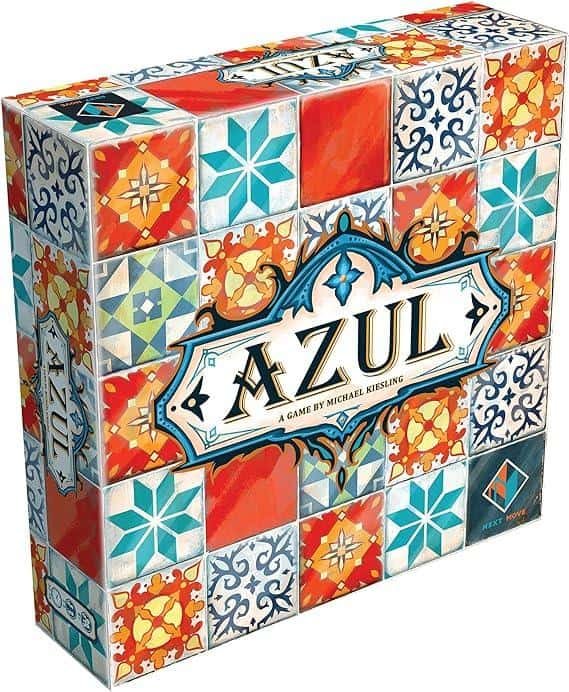
By: Next Move Games Players: 2-4 Time: 30-45 minutes Ages: 8+
Stepping away from the theme of area expansion and domination but sticking to some of the gameplay mechanics, Azul is a great slightly more modern game that has become very popular and is aesthetically very nice to look at.
Azul is a good balance of luck and strategy and requires players to plan ahead and anticipate their opponents actions. In the game, players will place tiles onto a board in order to create the next looking wall possible. This is done by selecting the tiles from set that everyone can potentially access. A certain amount of tiles are laid out and each turn players choose which ones they wish to take. They can however, only take one type of tile and must take all the tiles with the same pattern currently available. They’ll then place them on a track and move them once there are no more tiles left to choose. They will then score points based on how many tiles are in a vertical or horizontal row, and will score additional points if these rows and columns crossover. Any tiles that cannot be fit in the correct position however, are removed and points are deducted from the players score. As soon as someone creates a line of five tiles, the game is over and the highest scorer is the winner.
An excellent quick game that anyone can play. With the tiles looking as they do, it’s fun to create a beautiful wall from them as the game progresses.
As there are so many great games out there it’s hard to list them all, but these are certainly some of the best we’d recommend if you like games like Ticket To Ride. If there’s any we missed you think deserve a big shout-out then please let us know.
Cooperative Games
Cooperative games are a great way to play with friends and family, working together to achieve a common goal. Here are some cooperative games you might enjoy:
Collaborate to Save the World: Pandemic
In Pandemic, players work together to stop the spread of diseases and save the world. Each player has a unique role with different abilities, and must collaborate to share knowledge, treat diseases, and find cures. This game exemplifies cooperative gameplay, where teamwork and strategy are key to success.
Other cooperative games you might enjoy include:
Forbidden Island: Players must work together to retrieve four treasures from an island that is sinking. The game’s escalating tension and need for collaboration make it a thrilling experience.
Hanabi: In this unique card game, players work together to create a beautiful fireworks display. The twist? Each player can only see one side of their cards, requiring careful communication and teamwork.
Ghost Stories: Defend a village from invading ghosts in this challenging cooperative game. Players must use their unique abilities and work together to fend off supernatural threats.
These games offer a unique cooperative gameplay experience, where players must work together to achieve a common goal, making them perfect for those who enjoy collaborative challenges.
Also Read: The Best Cooperative Board Games
Family Games
Family games are a great way to spend time with loved ones, and can be enjoyed by players of all ages. Here are some family games you might enjoy:
Ticket to Ride: First Journey: A simplified version of the classic game, designed specifically for younger players. It retains the core mechanics of building routes and collecting cards but with a shorter play time and easier rules, making it perfect for family game nights.
Kingdomino: In this tile-laying game, players build their own kingdoms by matching tiles with similar landscapes. The game is easy to learn and quick to play, making it a great choice for families with younger children.
Dixit: A beautifully illustrated game where players use their imagination to interpret and describe cards. Dixit encourages creativity and storytelling, making it a fun and engaging game for players of all ages.
These family games offer a blend of simplicity and fun, ensuring that everyone, from younger players to adults, can enjoy a great game night together.
FAQ
Q1: What makes Ticket to Ride a popular board game for building routes?
Ticket to Ride is considered one of the best games due to its simple-to-learn rules combined with a good level of strategic gameplay. The game involves players creating train lines across the United States, with the goal of earning points through the creation of the most and longest routes. Its blend of strategy and luck makes it appealing to both casual gamers and enthusiasts.
Q2: How does Catan compare to Ticket to Ride in terms of gameplay?
Catan, like Ticket to Ride, is a strategic game but focuses on expanding settlements and gaining victory points through resource management and trading. While Ticket to Ride is centered on route building with train cards, Catan requires players to negotiate and utilize resources to build structures on the island of Catan.
Q3: What are some other games similar to Ticket to Ride?
Some other games similar to Ticket to Ride include Small World, Carcassonne, and Azul, which can also serve as engaging party games. These games share elements of strategic depth, route building, and tile placement, offering a variety of gameplay experiences that fans of Ticket to Ride might enjoy.
Q4: Are there expansions available for Ticket to Ride, and how do they differ from the base game?
Yes, there are several expansions available for Ticket to Ride. These expansions introduce new maps and often include unique rules that add twists to the traditional gameplay. For example, the New York version offers a smaller map and shorter play time, making it a quicker game compared to the original.
Q5: What is the key appeal of the game Azul compared to Ticket to Ride?
Azul offers a unique gameplay experience with its focus on tile placement and creating visually appealing patterns. Unlike Ticket to Ride’s route building, Azul requires players to strategically select and place tiles to form the best-looking wall, balancing luck and strategy in a different way.





